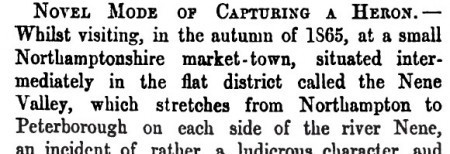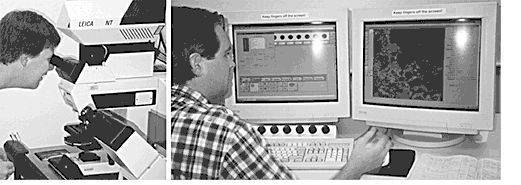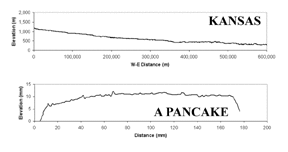Marc Abrahams's Blog, page 420
March 7, 2014
The firemen who saved the top of a triceratops
A triceratops makes a rare appearance in the news, in this March 6, 2014 report by Sidney Bender in the Vineyard Gazette [in Martha's Vineyard, Massachusetts]:
Triceratops Incineration? Not on Island Firemens’ Watch
When Oak Bluffs firefighters responded to a fully involved fire on Barnes Road late Wednesday night, they knew that they had more than just a house to save. A quick response by volunteer firemen saved both the summer home owned by Dr. Henry J. Kriegstein [pictured here] and a rare seven-and-a-half foot tall prehistoric dinosaur skull that was inside.
“We had prior knowledge of that fossil being in there so we were able to protect that pretty quickly,” said Oak Bluffs acting fire chief John Rose. Dr. Kriegstein, an eye surgeon with a fossil collecting hobby, said the triceratops skull in his Oak Bluffs home is one of few that exist in the world and is believed to be more than 43 million years old.
The fire call came in around 9 p.m. on Wednesday. Oak Bluffs volunteer firefighters responded within minutes….
(Thanks to investigator Sally Shelton for bringing this to our attention.)

The bricycle, a nearly unrideable bicycle/tricycle hybrid
This contraption, the bricycle, is in vital ways intermediate between being a bicycle and being a tricycle, it is adjustable to act as the one, or the other, or something inbetween (a better name for it might have been biandortricycle). The bricycle is said (and demonstrated here) to be almost unridable. Its the work of Owen Dong, Christopher Graham, Anoop Grewal, Caitlin Parrucci and Andy Ruina at Cornell. They have done a fair amount of research on what makes bicycles work and not work.
Kim Krieger, writing in Science Now, essays a look at the world of the bricycle.
(Thanks to investigator Steven Strogatz for bringing this to our attention.)
BONUS: The word “bricycle” has been used for other, unrelated projects. including one in Cleveland, Ohio and one in and about Brighton, UK.

‘Hmmm, sooo shiny, sooo nice’ – but why?
“Human beings are attracted to glossy objects. Shimmering lipsticks, gleaming cars, dazzling diamonds and sequined gowns [...]”
Given its prevalence, it’s perhaps surprising that motives for humans to seek out glossy, shiny, smooth things have, until now, gone largely underinvestigated in the scholarly world. A(n) hypothesis is presented, however, by doctoral student Katrien Meert of Ghent University, The Netherlands, in a new paper awaiting publication in the Journal of Consumer Psychology, ‘Taking a shine to it: How the preference for glossy stems from an innate need for water’
A series of six experimental studies were undertaken to test the hypothesis – which was partly supported :
“[...] this paper investigated the causes for human’s preference for glossy. Drawing on an evolutionary psychology framework, we show that the general preference effect for glossy pictures is (partly) due to an association with human’s innate preference for water.”
The paper is currently behind a $35.95 paywall, but it can also be read in full, without charge, via Katrien Meert’s doctoral thesis ‘Attracted to Attractiveness? The Effect of Attraction and Luxury on Consumers’ Mind, Attitudes and Values’ (chapter 2, page 45)
Note: Doctoral student Katrien Meert of Ghent University, The Netherlands, should not be confused with doctoral student Katrien Meert of Ghent University, The Netherlands, who investigates shining rather than shiny materials, and is undertaking a PhD in the unusual field of ‘incommensurable scheelites’.
Also see, more glossiness research: Smooth bodywork in cars and women

March 6, 2014
Old pictures of jetpacks strapped to cats and doves
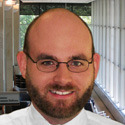 “Researcher baffled by document written by artillery master Franz Helm featuring pictures of jetpacks strapped to cats and doves” is the subheadline on an Associated Press article in The Guardian. It tells of a discovery made by University of Pennsylvania scholar Mitch Frass [pictured here]
“Researcher baffled by document written by artillery master Franz Helm featuring pictures of jetpacks strapped to cats and doves” is the subheadline on an Associated Press article in The Guardian. It tells of a discovery made by University of Pennsylvania scholar Mitch Frass [pictured here]
BONUS (unrelated): Esther the Cold War Kitty

A newly patented use for old new teeth
If you’ve ever been at a loss for ideas when it comes to finding a use for a child’s discarded primary teeth – a new US patent (#8661849) provides suggestions (though you might want to check with the inventor as to royalty arrangements for using his invention):
“The invention discloses jewelry made of disinfected, pulverized and chemically bonded primary teeth.”
Inventor John G. Fischer, of Irving, Texas, describes the rationale behind his invention : ‘Deciduous teeth matrix jewelry and method of manufacture’
“The history of jewelry is as old as the history of man. Styles and trends come and go and come again. What is not found in this history is any event of persons wearing their deciduous teeth, or that of their descendants in the form of jewelry. While the notion sounds barbaric and contrary to civilized norms to some, the inventor believes that it could symbolize the ultimate commitment of love and devotion a parent can have for a child. The symbol exceeds the relevance of personal adornment, much as a Christian wearing a cross. ”
The patent includes this mathematically interesting statement:
NOTE: Subject to any disclaimer, the term of this patent is extended or adjusted under 35 U.S.C. 154(b) for 0 days.

Novel Mode of Capturing a Heron (1866)
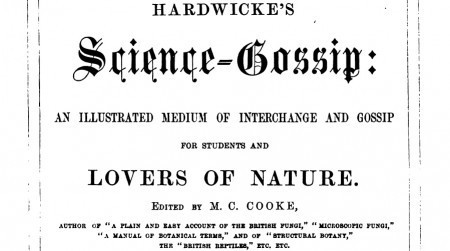 Hardwicke’s Science-Gossip was a monthly publication that brought science (mostly botany, zoology and geology) to the masses. Science-Gossip provided short summaries of scientific studies (mostly botany and zoology); advice to the hobbyist on raising reptiles, catching rare butterflies, building a microscope, etc; and most interesting, pages and pages of correspondence, answering readers’ questions and reprinting readers’ anecdotes.
Hardwicke’s Science-Gossip was a monthly publication that brought science (mostly botany, zoology and geology) to the masses. Science-Gossip provided short summaries of scientific studies (mostly botany and zoology); advice to the hobbyist on raising reptiles, catching rare butterflies, building a microscope, etc; and most interesting, pages and pages of correspondence, answering readers’ questions and reprinting readers’ anecdotes.
Though it did not seek to publish real scientific studies, on occasion Science-Gossip could be the venue for new discoveries. For example, the March 1866 edition recounts one young investigator’s novel technique for capturing a bird. Like all the best breakthroughs, it occurred unexpectedly, in the process of trying to do something else.
Novel Mode of Capturing a Heron. – Whilst visiting, in the autumn of 1865, at a small Northamptonshire market-town, situated intermediately in the flat district called the Nene Valley, which stretches from Northampton to Peterborough on each side of the river Nene, an incident of rather a ludicrous character, which may interest some of your readers, came under my notice.
A boy, having one night set some eel lines in a shallow part of the river… was surprised and somewhat alarmed on approaching the place next morning, for the purpose of examining his lines, by hearing the water in a state of violent commotion; advancing carefully, and parting the bulrushes with his hands, he peered cautiously through into the river, and discovered to his terror, that the cause of the splashing and dashing was an unlucky heron, who had gobbled up one of the baits, and… now found himself held a prisoner by the line. The boy, still frightened, warily drew up the peg, and dragging the unfortunate and reluctant bird the full length of the line in his rear, marched toward home.
He experienced considerable difficulty when crossing the meadows which lay between the river and the town, in persuading the heron to get over the stiles; but at last they reached the town, and I need scarcely say that in marching up the street the pair created quite a sensation: the boy walking sideways, staring in an excited manner alternately at the people at the doors, from which the sight elicited so much merriment and laughter, and at the heron, who averse to being drawn in such a manner from his favorite haunts… with body drawn back, and legs planted forward in a determined manner, slid, rather than walked, after his captor.
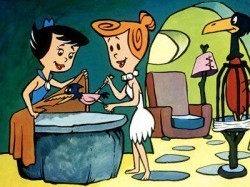
A typical workplace environment for captive birds
–E. Parkins, Luton.
E. Parkins is not clear on whether the young fisherman used this technique to recruit an army of captive birds, which could then be used to catch a multitude of fish, ukai style.
Follow Amboceptor on Twitter: @AmboceptorBlog

March mini-AIR: Pitted this and that, and stuff
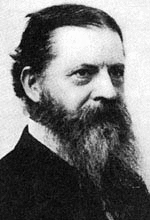 The March issue of mini-AIR (our monthly e-mail newsletter just went out. (mini-AIR is a wee little supplement to the magazine). Topics include:
The March issue of mini-AIR (our monthly e-mail newsletter just went out. (mini-AIR is a wee little supplement to the magazine). Topics include:
Human Epididymis’s Pitted Pattern
Cannock Chase Pitted Pebbles Limerick Competition
Interest of Ruin Probabilities Poet
Nuts, Cracking, and Pitted Stones
The Ig Nobel Euro-tour and the new Improbable book
and more
It also has info about upcoming events.
Mel [pictured here] says, “It’s swell.”
mini-AIR is the simplest way to keep informed about Improbable and Ig Nobel news and events.
Want to have mini-AIR e-mailed to you every month? Just add yourself to the mini-AIR list.

March 5, 2014
Kansans flattered by flatness vs Kansas flatness decriers
Kansans have long been at war with each other over the goodness of the flatness of their state. Some are proud, some are not. The University of Kansas has now issued a press release that creates its own controversy, and then claims to settle that controversy. The press release denigrates a paper we (the Annals of Improbable Research) published in 2003 that points out, simply, that Kansas is flatter than a pancake. The university’s press release boasts a headline that is irrelevant to that 2003 finding:
Research: If you think Kansas is the flattest U.S. state, you’re plain wrong
LAWRENCE — It’s time for some levelheaded talk about that ostensibly endless stretch of flatness some denigrate as “flyover country” and others respectfully call “Kansas.” The alleged monotony of the Sunflower State’s terrain is referenced about as often as “The Wizard of Oz” when Kansas pops up into conversation. “It’s truly engrained,” said Jerry Dobson [pictured here], professor of geography at the University of Kansas…
Dobson and Campbell took the measure of 48 states plus the District of Columbia and ranked them for flatness…. And — guess what? Kansas didn’t even crack the top five U.S. states for flatness….
The findings appear in the current issue of the Geographical Review… Dobson hopes the research will help dispel the myth that Kansas is so formidably flat.
The article we published, long ago, to wide acclaim (we even received a phone call from the state of Kansas’s director of tourism, who said he hoped the publicity would cause tourists to come see Kansas), is called “Kansas Is Flatter Than a Pancake“. Authors by Mark Fonstad (now at the University of Oregon), William Pugatch (at the Department of Geography, Texas State University, as was Mark Fonstad when they wrote the article) and Brandon Vogt (then at the Department of Geography, Arizona State University, now at the University of Colorado, Colorado Springs) wrote:
While driving across the American Midwest, it is common to hear travelers remark, “This state is as flat as a pancake.” To the authors, this adage seems to qualitatively capture some characteristic of a topographic geodetic survey. This obvious question “how flat is a pancake” spurned our analytical interest, and we set out to find the ‘flatness’ of both a pancake and one particular state: Kansas….
We purchased a well-cooked pancake from a local restaurant, the International House of Pancakes, and prepared it for analysis by separating a 2-cm wide sample strip that had not had time to desiccate. We collected macro-pancake topography through digital image processing of a pancake image and ruler for scale calibration (see Figure 2)….
We measured a west-east profile across Kansas taken from merged 1:250,000 scale digital elevation model (DEM) data from the United States Geological Survey….
ResultsThe topographic transects of both Kansas and a pancake at millimeter scale are both quite flat, but this first analysis showed that Kansas is clearly flatter (see Figure 4).
(Thanks to investigator Tim Radford for bringing this to our attention.)

A Feminist Psycho-Semiotic Reflection on Men’s Embodiment of Metaphor in a Toronto Zombie Walk
Many so-called “theories of everything” leave out the concepts that are the focus of this study:
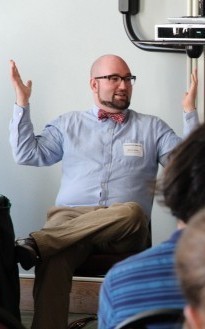 “He is Dead, and He is Continuing to Die: A Feminist Psycho-Semiotic Reflection on Men’s Embodiment of Metaphor in a Toronto Zombie Walk,” Bryce Peake [pictured here], Journal of Contemporary Anthropology, vol. 1, no. 1, 2010. The author, a Ph.D student at the University of Oregon, explains:
“He is Dead, and He is Continuing to Die: A Feminist Psycho-Semiotic Reflection on Men’s Embodiment of Metaphor in a Toronto Zombie Walk,” Bryce Peake [pictured here], Journal of Contemporary Anthropology, vol. 1, no. 1, 2010. The author, a Ph.D student at the University of Oregon, explains:
“Every October, the dead rise in Toronto; approximately 3,500 to 5,000 individuals take to the street as a unified social body of death through dressing as zombies. In this essay, I explore the affective state of men in the Toronto Zombie Walk from a feminist psycho-semiotic perspective.”
Footnote 8 attempts to clarify a point that some find difficult to grasp intuitively:
“However, to be clear, this yonic imagery embodied by men is not merely a vagina. In the activation of an Eroscentered mythology, Thanatos cannot be embodied unchanged. In this, and adding to the unconscious state and libidinous energy, Eros and Thanatos collapse on one another. The zombie’s “yonic” does not give birth in the production of life, of which the yonic is representative. Rather, it consumes in order to bring death, serving the persistence and advancement of death as a state of being—a painful, bloody death accompanied by eternal moans and screams for release. Thus, the zombie aesthetic of gaping wounds on the face and hands is rather the vagina dentate.”
BONUS: Fourteen minutes of video of the Toronto Zombie Walk in 2010, the year this paper was published:

VR – Mysteries of the scent projector (part 2)
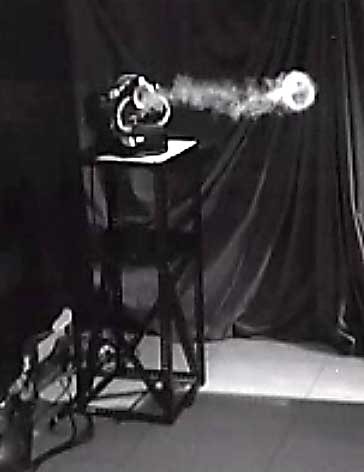 We recently profiled the work of the Yanagida Laboratory of Meijo university, Nagoya, Japan, where work is underway on a vortex ring scent projector to deliver accurately timed odours to participants in a virtual reality (VR) environment. But the projector (one of which is picture at right) had a drawback : “One of the problems is that the user feels as if sudden wind (turbulence) come when the vortex ring hits one’s face.” Now the lab has developed a solution, called SpotScents – see: ‘Pilot study for generating dynamic olfactory field using scent projectors’ which is published in Virtual Reality (VR), 2013 IEEE and describes how not just one, but two scented rings can be made to collide in mid air. Thus stopping the odour plume in its tracks for accurate stationary scent positioning :
We recently profiled the work of the Yanagida Laboratory of Meijo university, Nagoya, Japan, where work is underway on a vortex ring scent projector to deliver accurately timed odours to participants in a virtual reality (VR) environment. But the projector (one of which is picture at right) had a drawback : “One of the problems is that the user feels as if sudden wind (turbulence) come when the vortex ring hits one’s face.” Now the lab has developed a solution, called SpotScents – see: ‘Pilot study for generating dynamic olfactory field using scent projectors’ which is published in Virtual Reality (VR), 2013 IEEE and describes how not just one, but two scented rings can be made to collide in mid air. Thus stopping the odour plume in its tracks for accurate stationary scent positioning :
“A technique for locally distributing scented air and controlling its direction of movement is proposed. By causing two vortex rings carrying scented air to collide with each other, a local distribution of scent can be achieved in free space. Thus far, however, the behavior of scented air after vortex collision has not been controlled. In this study, we propose a method for varying the moving direction of scented air after the collision by precisely controlling the timing and velocity when expelling vortex rings. We conducted an initial experiment to examine the feasibility of this method and found that direction control of the airflow after vortex collision can be achieved by adjusting the velocity of vortex rings.”
A video showing the machinery in action (unfortunately only in .wmv format) is available here. Much more detail about the entire project is available online here, courtesy the Yanagida Laboratory.

Marc Abrahams's Blog
- Marc Abrahams's profile
- 14 followers




